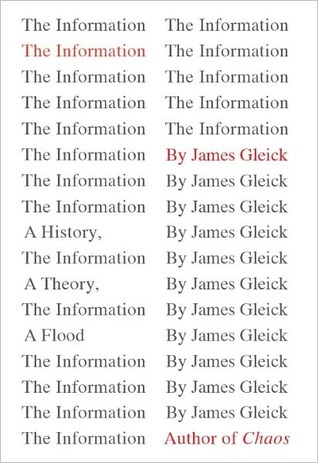More on this book
Community
Kindle Notes & Highlights
simulacrum
“A mathematician is not a man who can readily manipulate figures; often he cannot,” Bush wrote. “He is primarily an individual who is skilled in the use of symbolic logic on a high plane, and especially he is a man of intuitive judgment.”
planimeter,
excrescences;
reifying
The Baudot code used five units to transmit each character, so the number of possible characters was 25 or 32.
fungible.
stochastic,
Now, instead of boosting the power, a sender can overcome noise by using extra symbols for error correction—just as an African drummer makes himself understood across long distances, not by banging the drums harder, but by expanding the verbosity of his discourse.
IN NO IST LAT WHEY CRATICT FROURE BIRS GROCID PONDENOME OF DEMONSTURES OF THE REPTAGIN IS REGOACTIONA OF CRE.
cybernetics
ataxia,
Feedback is the governor, the steersman.
abstruse
“Information is information, not matter or energy. No materialism which does not admit this can survive at the present day.”
Circular Causal and Feedback Mechanisms
Professor Wiener is a stormy petrel (he looks more like a stormy puffin) of mathematics and adjacent territory. . . . The great new computers, cried Wiener with mingled alarm and triumph, are . . . harbingers of a whole new science of communication and control, which he promptly named “cybernetics.” The newest machines, Wiener pointed out, already have an extraordinary resemblance to the human brain, both in structure and function. So far, they have no senses or “effectors” (arms and legs), but why shouldn’t they have?
neurosis!”
post-prandial
sonnet
moribund.
(somatology)
ineffable.
the number of possible chess games was more than 10120—a number that dwarfs the age of the universe in nanoseconds. So computers cannot play chess by brute force; they must reason, as Shannon saw, along something like human lines.
Mr. Shannon, I don’t mean to knock your experiments, but frankly I’m not remotely interested in even one computer, and I’m going to be pretty sore if a gang of them crowd in on me to multiply or divide or whatever they do best.
platitudinous
larceny
(You Cannot Stir Things Apart)
“1. You can’t win; 2. You can’t break even either.”
The final state of maximum entropy is our destiny.
Energy is not lost, but it dissipates. Dissipated energy is present but useless.
“phlogiston”—
The 2nd law of Thermodynamics has the same degree of truth as the statement that if you throw a tumblerful of water into the sea, you cannot get the same tumblerful of water out again.
the stable state of a living organism is to be dead.”
entelechy—
ontogenetic
What lies at the heart of every living thing is not a fire, not warm breath, not a “spark of life.” It is information, words, instructions. If you want a metaphor, don’t think of fires and sparks and breath. Think, instead, of a billion discrete, digital characters carved in tablets of crystal.
‘allelomorphs.’
Codes, instructions, signals—all this language, redolent of machinery and engineering, pressed in on biologists like Norman French invading medieval English.
catalysis
cybernetics at the bacterial level.
codons
Mendelian
“We are survival machines—robot vehicles blindly programmed to preserve the selfish molecules known as genes.”
the conceit of man, and his habit, persisted in during many ages, of ignoring all that does not remind him of himself.
“Anthropocentrism is a disabling vice of the intellect,”
one asks the forensic detective’s question, cui bono? Who benefits when a bird spots a predator and cries out, warning the flock but also calling attention to itself?
impute
oncogenes,
the genes composing the human genome are only a fraction of the genes carried around in any one person, because humans (like other species) host an entire ecosystem of microbes—bacteria, especially, from our skin to our digestive systems. Our “microbiomes” help us digest food and fight disease, all the while evolving fast and flexibly in service of their own interests.


